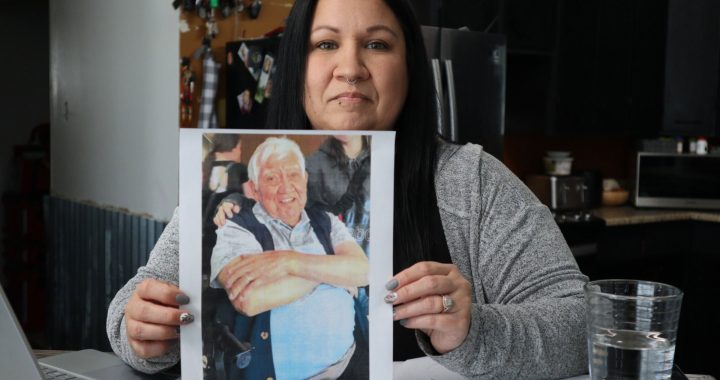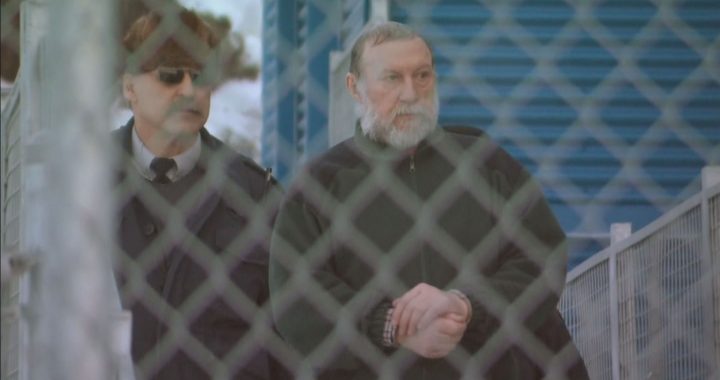APTN National News
Drums sounded outside RCMP headquarters in Winnipeg while inside investigators were releasing details and painting a bleak picture of the violence First Nations, Metis and Inuit women have faced for more than three decades.
The number, 1,181, has been known for more than two weeks when RCMP commissioner Bob Paulson was asked about the issue by reporters after he testified before a parliamentary committee. But today’s detailed description of the violence Aboriginal women have faced between 1980 to 2012 was moved away from the national media spotlight in Ottawa to Winnipeg and Paulson did not attend.
“This report is the most comprehensive data set ever compiled by police on missing and murdered Indigenous women, said Deputy Commissioner Janice Armstrong, of the RCMP’s contract and Aboriginal policing branch.
As expected, the report reveals that Aboriginal women in Canada are more likely to die a violent death than non-Aboriginal women, usually at the hands of someone they know. While Aboriginal women only make up 4.3 percent of the population, they account for 16 per cent of female homicide and 11.3 percent of missing women in Canada.
“The issue of missing and murdered Indigenous women is a societal problem that needs a much larger approach from all corners of society, said Armstrong.
Among the first major pieces of research on this issue came from the Native Women’s Association of Canada’s program, called Sisters in Spirit. Its funding was eventually cut by the Harper government but not before researchers documented 582 cases of Aboriginal women who were either murdered or had gone missing. This study, however, ordered by Paulson, canvassed police forces from across the country, looked into the 582 cases and found many more waiting for them.
“The purpose of the review was to validate the research previously done on this topic. It’s the first time all police across the country have cooperated,” said Supt. Tyler Bates, director of national Aboriginal policing and crime prevention services.
Reaction, both from families and politicians was immediate.
“I’m a little discouraged,” said Bernadette Smith, sister of Claudette Osborne, a 21-year-old Winnipeg girl who vanished in 2008. “There’s not a lot of tangible action in the report, you know in terms of how they’re going to work with communities, how they’re going to repair the relationship and the distrust that’s been created. We need more proactive strategies. How are we going to stop this from continuing to happen?”
Police say this information would be used to create strategies to combat violence in communities across the country. But the senior RCMP officers speaking to the media would not comment on whether the report should lead to a national inquiry into missing and murdered indigenous women. When asked if the RCMP now feel they have all the answers they need to understand the issue, Deputy Commissioner Armstrong acknowledged, “I don’t think we have the answers we need, no.” “Important questions still need to be answered.” She said. Armstrong later added that the questions of a national inquiry are “not for the police” to answer.
Friday is a lonely place on parliament hill. Most MP’s are travelling home and rarely are ministers available to comment. But there was some reaction from both sides of the political spectrum.
Aboriginal Affairs Minister Bernard Valcourt, the minister responsible for First Nations, Metis and Inuit people in Canada, was not speaking on the issue nor did his office issue a statement. According to a spokesperson in Valcourt’s office, Justice minister Peter McKay was taking the lead. In a statement from his office to media shortly after the report was released, Mckay says the report is proof there is no need for a national inquiry.
“This comprehensive study will help further inform the actions the government is taking in our efforts to keep our streets and communities safe. Some 40 studies have already been completed over the years dealing with the issue of missing and murdered Aboriginal women. We must continue to take concrete action now, not just continue to study the issue,” he said.
But opposition parties in Ottawa see the report in a different way.
“Today’s report clarifies both the shocking scope of the crisis of missing and murdered Indigenous women and girls in Canada, and the fact that this crisis has gotten dramatically worse over time,” said Carolyn Bennett, Aboriginal Affairs critic for the Liberal party. “The only way to put an end to this national tragedy and find justice for its victims is to call a full national public inquiry and to do so immediately.”
And the official opposition NDP says police must do more than study the issue.
“I think the RCMP statement that action has to be taken on prevention is an important one because we want to prevent these crimes in the first place,” said Jean Crowder, Aboriginal Affairs critic. “The status quo isn’t working and we need to take extraordinary measures to address the crisis of missing and murdered Indigenous women.”
• Police-recorded incidents of Aboriginal female homicides and unresolved missing Aboriginal females in this review total 1,181 – 164 missing and 1,017 homicide victims.
• There are 225 unsolved cases of either missing or murdered Aboriginal females: 105 missing for more than 30 days as of November 4, 2013, whose cause of disappearance was categorized at the time as “unknown” or “foul play suspected” and 120 unsolved homicides between 1980 and 2012.
• The total indicates that Aboriginal women are over-represented among Canada’s murdered and missing women.
• There are similarities across all female homicides. Most homicides were committed by men and most of the perpetrators knew their victims, whether as an acquaintance or a spouse.
Many have long held that police lacked the will to solve many of these crimes. But according to the data, crimes against First Nation, Metis and Inuit women are solved at close to the same rate as the national average. Police forces across Canada reported solving 88 percent of Aboriginal female homicides since 1980, and 89 percent of other cases.
But Amnesty International questions the accuracy of the data.
“The report acknowledges that the reported numbers of unresolved cases of missing Indigenous women and girls may not be accurate for this reason,” said Alex Neve. “Among homicides, the RCMP claims to have successfully resolved the question of Indigenous identity in almost all the cases where this identity was previously recorded as unknown. However, there is still considerable potential that some Indigenous victims have been mistakenly identified as non-Indigenous.”
Who are the perpetrators in these violent cases against Aboriginal women? The report states that in only eight percent of the cases was the killer a stranger. Instead, they were killed by a spouse or aquaintance, someone who had a past criminal record, on social assistance, and/or had a history of family violence. Aboriginal female victims of homicide themselves are more likely to have criminal records, have no employment and to have consumed intoxicants before their death.
“There are certain vulnerabilities, socially and economically, that make Aboriginal women at risk, said Supt. Bates.
The next steps in addressing issues in this report include enhancing efforts on unresolved cases, focusing on prevention methods and increasing public awareness.
“Police are only one part of the solution. Society must become engaged in addressing the problem,” said Deputy Commissioner Armstrong.
@aptnnews











Investigating the deaths and disappearances of women (and men) both of aboriginal and non aboriginal is important . Every woman and man regardless of their ethnicity or gender deserves recognition. We need to consider every missing or murdered person of worthy of investigation. If we wish to live in peace, we need compassion for non native victims too, Why create a division…as though the suffering of one nationality is of greater importance than another, If there are more deaths and disappearances in the native community, we need to look at what is in common with non native…If we find for example that deaths and disappearances are correlated with alcoholism or drug abuse or being a ward of Child and Family Services, or involvement of the criminal justice system, then we can target those correlations to do better.